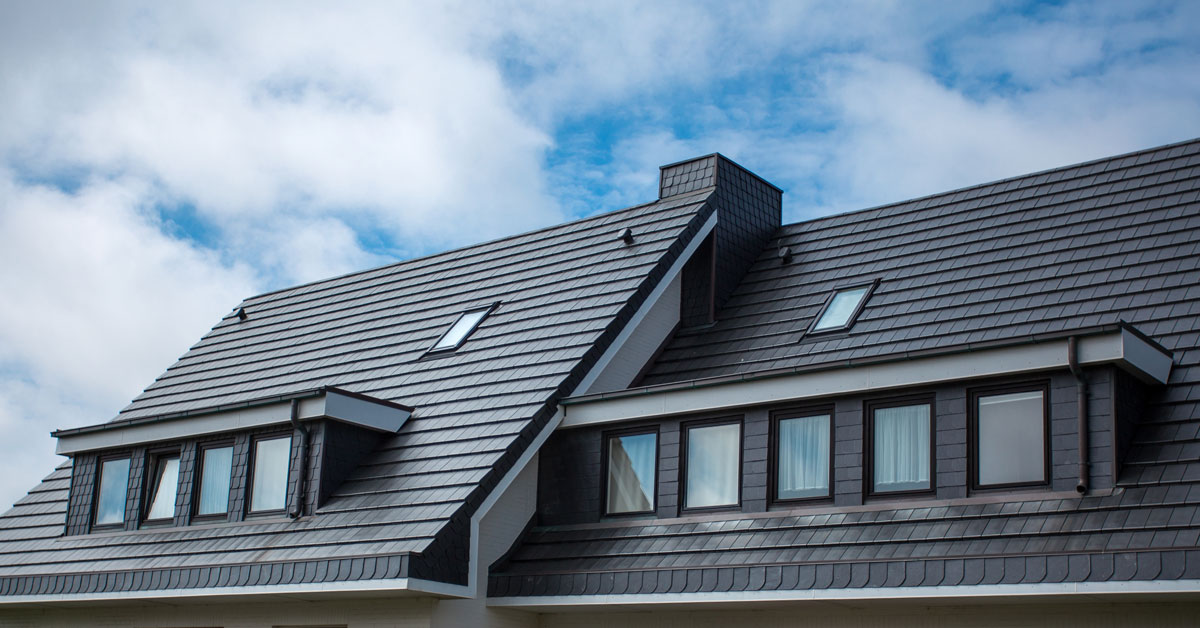Neighborhood Insights on Roofing Companies Gainesville Florida Homeowners Prefer
Neighborhood Insights on Roofing Companies Gainesville Florida Homeowners Prefer
Blog Article
Ideal Practices for Ensuring Appropriate Roofing Air Flow
A balanced intake and exhaust air vent ratio, frequently 1:300, plays an essential function, with consumption vents ideally positioned at the reduced side of the roof for trendy air entrance and exhaust vents at the optimal for cozy air exit. Keeping insulation away from vents is important to stop air movement limitation.
Understand Ventilation Basics
Appropriately recognizing air flow essentials is important for ensuring the longevity and efficiency of roof. Effective ventilation alleviates wetness build-up and temperature extremes in the attic room, both of which can lead to considerable architectural damage with time. A well-ventilated roofing system assists in preventing typical issues such as mold development, timber rot, and ice dams, which can endanger the integrity of the roof materials and the underlying frameworks.
The key objective of air flow is to facilitate the activity of air, permitting a consistent exchange in between the interior and exterior environments. This balance is accomplished with a combination of intake and exhaust vents that interact to preserve ideal air movement. Intake vents, commonly situated along the soffits or eaves, enable fresh air to enter the attic room space, while exhaust vents, usually situated at or near the roofing ridge, enable warm, humid air to get away.
Secret variables affecting the effectiveness of roofing ventilation consist of correct placement, appropriate sizing, and ensuring that both intake and exhaust vents are unblocked. Regular examination and maintenance are essential to identify possible clogs, damages, or ineffectiveness in the ventilation system, therefore securing the roofing's efficiency and sturdiness.
Sorts Of Roofing System Vents
Roof vents play a vital function in keeping effective attic ventilation and, by expansion, the overall wellness of the roofing system. Different types of roof covering vents are offered, each with unique benefits tailored to particular roofing demands.

Soffit vents are installed under the eaves and operate in tandem with roof covering vents to make sure a well balanced intake and exhaust system. By enabling cooler air to go into from below, soffit vents help with the expulsion of warm air with upper vents. Gable vents, situated on the exterior walls of the attic room, offer another reliable solution, specifically in homes with saddleback roofs.
Examine Your Current Ventilation

Following, think about the age and condition of your roofing products and ventilation elements. Older systems might not follow present structure codes or may have weakened with time, lowering their performance. Conduct a comprehensive evaluation to determine any type of signs of wear and tear, such as corrosion, damage, or spaces that can endanger the system's performance.
Furthermore, measure the attic temperature level and moisture levels. High temperatures and moisture can suggest insufficient air flow.
Installation Best Practices
Effective setup of roofing ventilation systems is critical for ensuring optimum performance and long life. Correct installation starts with comprehending the certain ventilation demands of the structure and the roof covering it covers. This involves calculating the correct ratio of consumption to exhaust vents, normally sticking to the 1:300 rule, which states one square foot of ventilation for every single 300 square feet of attic room flooring room.

The positioning of vents is just as important. Intake vents must be mounted at the roof's lower edge, usually in the soffits, to enable awesome air to enter. Exhaust vents, on the various other hand, should be mounted near or at the roof's top to facilitate the exit of cozy, wet air. This creates an all-natural air flow that assists preserve temperature level and wetness equilibrium within the attic room space.
Seal all vent links thoroughly to stop air leakages and possible water seepage. Usage high-quality products and adhere to manufacturer guidelines to make sure durability and efficiency. In addition, integrating ridge vents with baffles can dramatically enhance air movement effectiveness recommended you read by protecting against wind-driven rainfall and snow from entering the attic room.
Inevitably, specific installation of roofing air flow systems alleviates possible concerns such as mold and mildew development, ice dams, and architectural damages, making certain the roof's stability and the building's general health and wellness.
Routine Maintenance Tips
Consistency in maintenance methods is basic to making sure the lasting performance of roof covering ventilation systems. Regular inspections are important, preferably done biannually-- in the spring and fall. Throughout these assessments, make sure that vents are devoid of debris, nests, and various other obstructions that could restrain air flow. Inspect for any type of signs of dampness build-up or mold and mildew, as these can suggest improper air flow or leakages (gainesville roofing companies).
Utilize a soft brush or a vacuum to eliminate dust and debris from intake and exhaust vents. Be mindful not to harm the vent screens or louvers throughout the process.
Appropriate insulation is similarly important. Make certain that attic insulation does not block the vents, as this can badly limit air movement. Rearrange or replace it to Get More Information preserve an efficient barrier. if any type of insulation has actually shifted or settled.
Finally, change any type of harmed or missing out on parts immediately. Damaged vents, split tiles, or shabby blinking can all contribute to insufficient ventilation and ought to be attended to immediately. Normal upkeep ensures that the roofing air flow system operates ideally, thus extending the lifespan of the roofing system itself.
Final Thought
Making certain appropriate roof air flow is critical for maintaining the performance and sturdiness of a roof covering system. Adherence to the 1:300 consumption and exhaust vent ratio, paired with the critical positioning of vents, is essential. Regular biannual inspections, debris cleaning, and ensuring insulation does not block airflow are important techniques. Carrying out these best methods will cultivate a well-ventilated roof, consequently minimizing prospective concerns connected to moisture buildup and too much warmth, ultimately prolonging the roofing system's life-span.
A balanced intake and exhaust vent ratio, typically 1:300, plays a crucial duty, with consumption vents preferably positioned at the lower edge of the roof covering for great air entry and exhaust vents at the peak for warm air departure. Consumption vents, usually situated along the soffits or eaves, permit fresh air to enter the attic room space, while exhaust vents, commonly positioned at or near the roof ridge, make it possible for hot, humid air to leave.
Soffit vents are installed under the eaves and job in tandem with roofing system vents to make sure a well balanced consumption and exhaust system. By allowing cooler air to get in from below, soffit vents facilitate the expulsion of hot air via upper vents. Adherence to the 1:300 intake and exhaust vent proportion, combined with the tactical positioning of Our site vents, is crucial.
Report this page